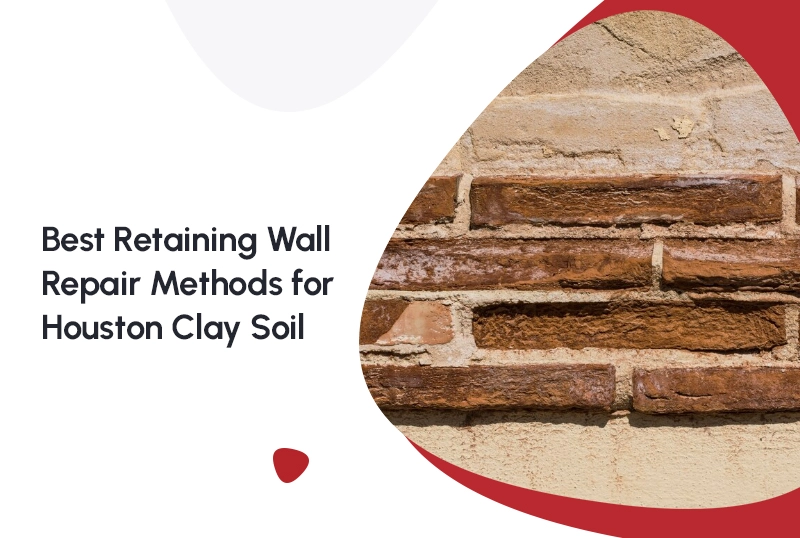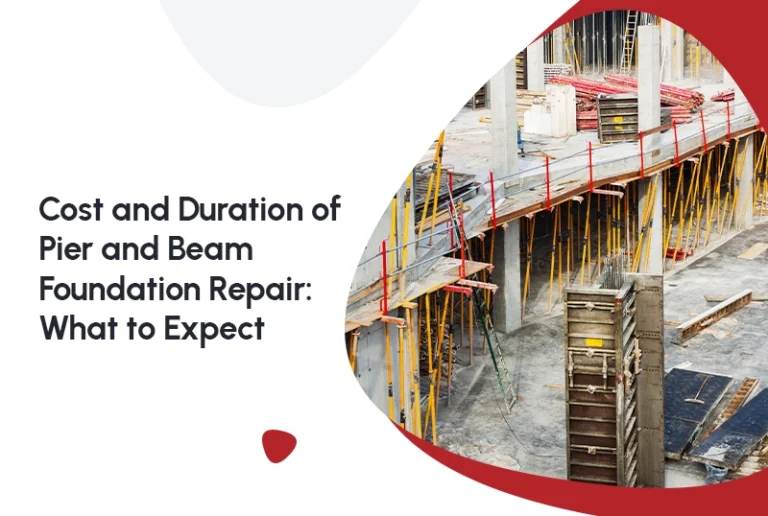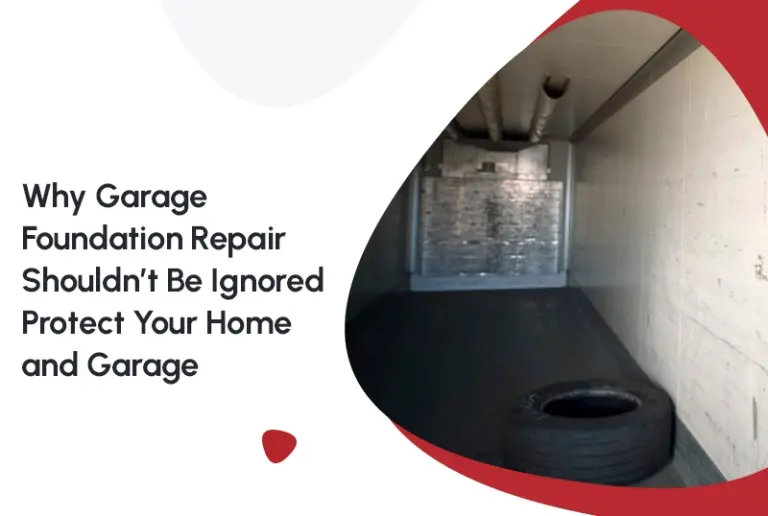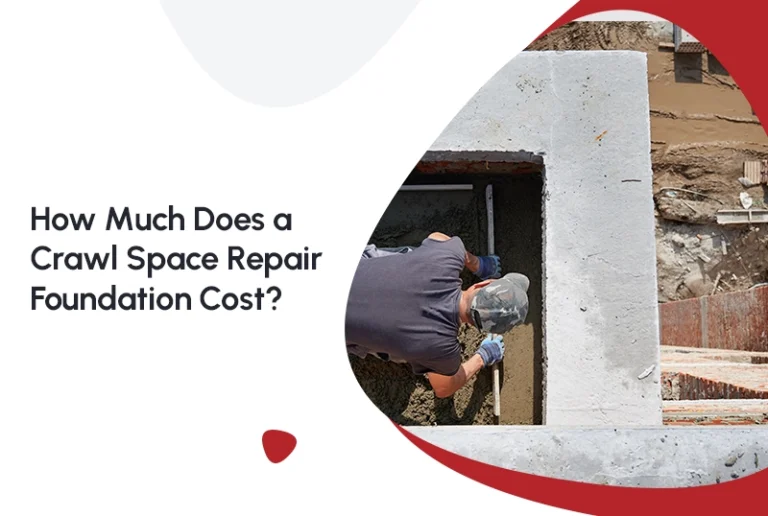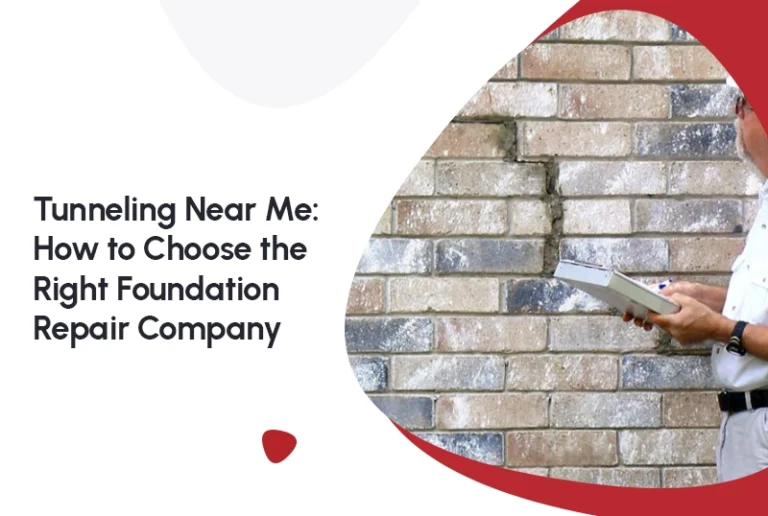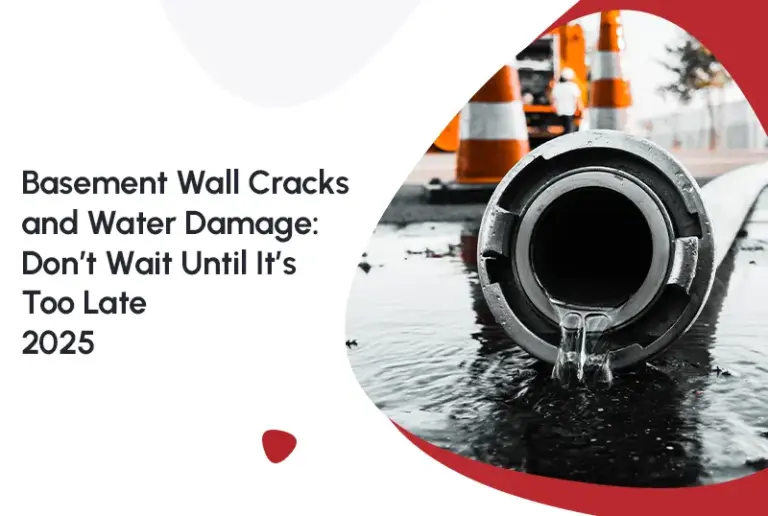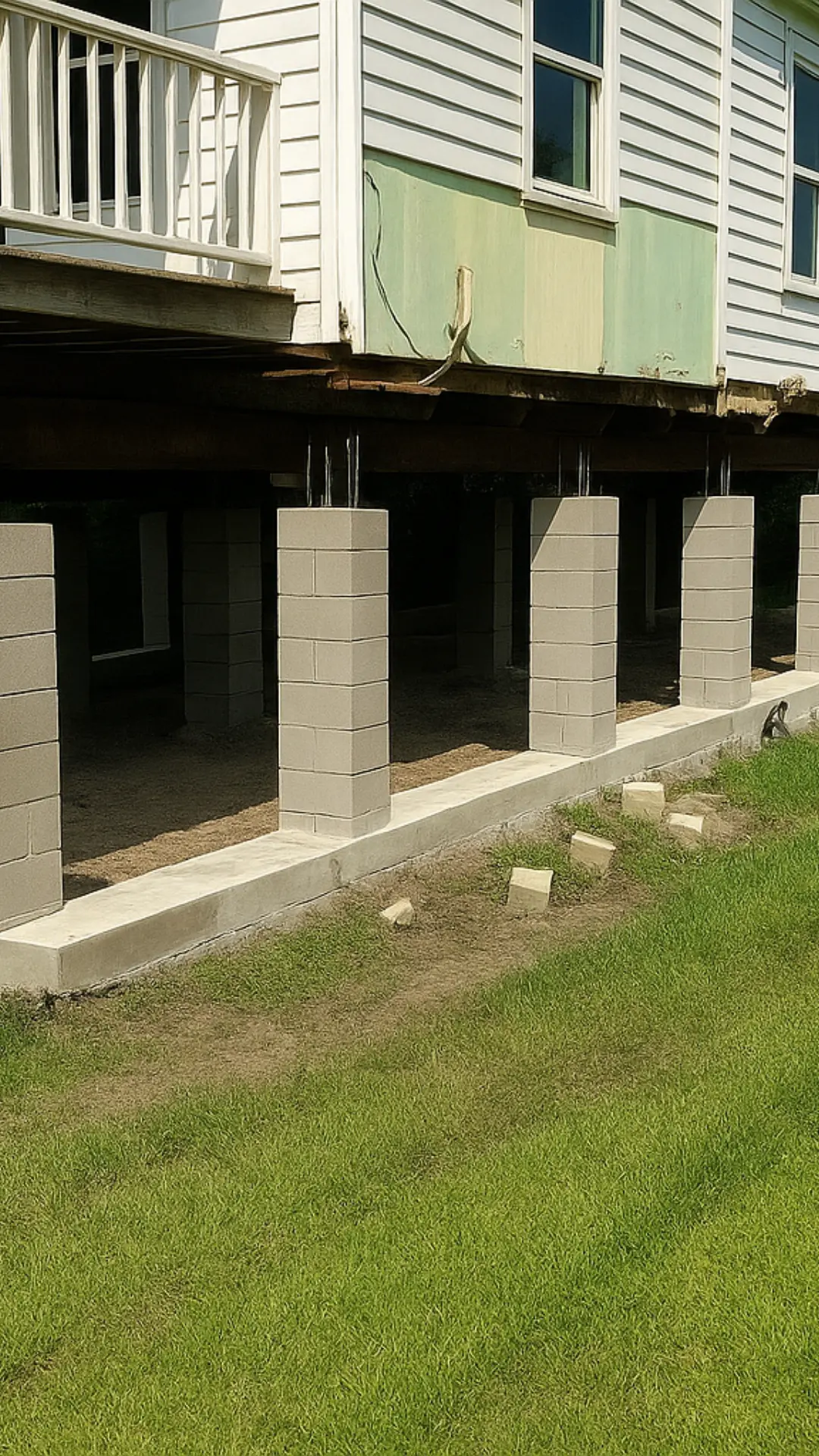Retaining walls are essential structures that help stabilize soil, prevent erosion, and protect your landscape. In Houston, a city known for its expansive clay soil, retaining wall repair can be crucial due to the constant shifting and swelling of the soil. If you’ve noticed that your retaining wall is leaning, cracking, or experiencing water-related issues, it may be time to consider professional repair. This guide explores the best methods for retaining wall repair specific to Houston’s clay soil, providing insight into practical repair techniques and real-life examples to help you make an informed decision.
Understanding Houston’s Clay Soil and Its Impact on Retaining Walls
Houston’s clay soil is notorious for its expansive nature, meaning it swells when wet and shrinks during dry spells. This shifting motion can put a significant amount of pressure on retaining walls, causing them to crack, lean, or even collapse if left unchecked. The problem is exacerbated by Houston’s humid climate and heavy rains, which can infiltrate the wall structure, causing soil instability.
For example, consider a homeowner in Houston who noticed a portion of their retaining wall started tilting after a heavy storm. The cause? Expansive clay soil that absorbed excess water, exerting pressure on the wall, leading to cracks and instability. Without timely retaining wall repair, this minor issue could have turned into major foundation repair needs for the home itself.
Signs You Need Retaining Wall Repair
Before we dive into retaining wall repair methods, it’s essential to recognize the signs that indicate your retaining wall needs attention:
1. Cracks in the Wall:
Small cracks can develop in the retaining wall as a result of soil movement. If left unchecked, these cracks can widen, letting in moisture and further destabilizing the wall.
Example: A Houston homeowner noticed small vertical cracks in their wall, which eventually worsened into large gaps, causing the wall to lean forward.
2. Leaning or Tilting:
The weight of the soil and water pressure can cause a retaining wall to lean or tilt, which not only affects its appearance but also its functionality.
Example: After several months of heavy rainfall, a retaining wall on a sloped Houston property began leaning significantly, threatening to collapse onto the garden.
3. Water Pooling or Drainage Issues:
Water buildup behind the retaining wall is a sign of poor drainage. In Houston’s clay soil, this can lead to erosion and further pressure on the wall.
Example: A homeowner discovered standing water in their crawl space after a storm, which was traced to improper drainage behind the retaining wall.
4. Soil Erosion Behind the Wall:
Soil erosion or significant soil loss behind the wall indicates that the wall’s structure is no longer holding back the soil effectively.
Example: A retaining wall holding back a backyard garden started losing soil after a heavy downpour. Upon inspection, the wall was found to have shifted, creating gaps that allowed water and soil to slip through.
Recognizing these signs early can prevent costly foundation repair later, as the structural issues caused by a damaged retaining wall can affect your home’s overall foundation.
Effective Retaining Wall Repair Methods for Houston Homes
Retaining wall repairs in Houston face unique challenges due to clay soil, which is prone to shifting. There are several repair methods available depending on the extent of the damage and the specific issues caused by the soil. Below are some of the most effective retaining wall repair solutions:
1. Soil Stabilization and Compaction
One of the most effective ways for retaining wall repair to prevent damage is to stabilize the soil behind it. Expansive soils like those found in Houston need proper compaction and stabilization to reduce the shifting that leads to wall damage. This process typically involves compacting the soil and adding soil stabilizers or other materials to improve its load-bearing capacity.
Example: A homeowner in Houston with a sloped yard used a soil stabilization method, which involved adding lime to the clay soil to improve its stability. This reduced the pressure on the retaining wall and prevented further shifting.
Benefits of Soil Stabilization:
- Minimizes the risk of wall settlement and cracking.
- Helps stabilize the soil long-term, reducing the likelihood of additional repairs.
- Prevents soil erosion and foundation movement, especially in pier and beam foundations.
2. Drainage System Installation
Water is the leading cause of damage to retaining walls in Houston. Excess water can cause the soil behind the wall to expand, leading to significant pressure on the structure. Installing a proper drainage system can redirect water away from the wall and prevent future damage and avoid retaining wall repair.
Common drainage systems for retaining walls include:
- French Drains: A trench filled with gravel and a perforated pipe to direct water away from the wall.
- Sump Pump Systems: Pumps water out from beneath the wall to prevent water buildup.
Example: A property in Houston with a pier and beam foundation had recurring water pooling behind the retaining wall, which led to extensive erosion. The installation of a French drain system effectively directed water away from the wall and restored its stability.
Benefits of Drainage Systems:
- Prevents water from seeping into the wall structure, reducing the risk of cracking and erosion.
- Protects the surrounding foundation from water-related damage.
- Helps reduce hydrostatic pressure on the wall.
3. Pier and Beam Foundation Repair
If the retaining wall is severely damaged due to soil shifting, pier and beam foundation repair can provide long-term stability. Steel piers are driven deep into the ground to provide a stable foundation, lifting the wall back into position.
Example: A Houston homeowner with a sagging retaining wall caused by shifting soil had steel piers installed beneath the wall to restore its original position. This prevented further movement and avoided the need for a full retaining wall repair.
Benefits of Pier and Beam Repair:
- Restores the structural integrity of the retaining wall.
- Stabilizes the surrounding soil and foundation system.
- Offers a long-term solution for settling and shifting issues.
4. Crack Filling and Wall Reinforcement
Minor cracks and shifts in a retaining wall can often be repaired using epoxy injections or carbon fiber reinforcement. This method involves filling the cracks with epoxy, which bonds the wall and prevents further water infiltration. For walls showing more significant shifting, additional reinforcement such as steel plates or anchors can be added to restore structural integrity.
Example: A Houston homeowner noticed small cracks in their retaining wall, which were causing water to seep through. After the cracks were filled with epoxy and the wall reinforced with carbon fiber, the wall was restored to its original strength.
Benefits of Crack Filling:
- Cost-effective for small to moderate damage.
- Prevents further water damage and soil erosion.
- Improves the strength and stability of the wall.
5. Concrete Leveling
If your retaining wall has shifted unevenly, concrete leveling can be used to restore it to its original position. This method involves injecting a leveling compound beneath the wall to raise it back into place. Slab jacking and polyurethane foam injections are commonly used methods.
Example: A property owner in Houston noticed that their retaining wall was sinking due to shifting soil. By using concrete leveling methods, the wall was lifted back into place, preventing further settling and avoiding a full replacement.
Benefits of Concrete Leveling:
- Restores the wall’s original height and stability.
- Cost-effective compared to full wall replacement.
- Reduces the likelihood of future soil movement.
When to consider retaining wall repair
While most retaining wall repair methods are effective, there comes a point when repairs are no longer sufficient. If the damage to the wall is too severe, or if the foundation of the wall is compromised, it may be necessary to replace the entire structure.
Signs that replacement is needed:
- Severe cracks or leaning that cannot be corrected by repairs.
- Erosion or collapse of the wall.
- Major structural damage or movement affecting the foundation.
Benefits of Replacement:
- Provides a long-lasting solution to the problem.
- Allows for better materials and design, improving both function and appearance.
- Increases the structural integrity of the surrounding area and prevents future foundation issues.
Conclusion
Houston’s clay soil poses unique challenges for retaining wall repair, but with the right methods, you can restore your wall’s strength and functionality. Whether you’re dealing with minor cracks, leaning, or water damage, timely repairs can prevent costly foundation repair down the line. From drainage systems and pier and beam repairs to soil stabilization, there are a variety of methods available to address the specific issues caused by Houston’s soil. Early intervention ensures that your retaining wall performs its job of stabilizing the soil and protecting your landscape.
If you notice issues with your retaining wall, it’s important to consult with a professional who can assess the damage and recommend the best course of action. Whether you need a pier and beam repair or concrete leveling, the right solution can save you money and protect your home from further damage.
FAQs
1. How do you repair a damaged retaining wall?
Retaining wall repair typically involves identifying the cause of failure first, whether it’s soil erosion, water pressure, or settling. Common repairs include reinforcing the wall with additional supports like steel or wooden braces, replacing damaged blocks, and improving drainage behind the wall to relieve pressure. If the wall is structurally compromised, rebuilding certain sections or the entire wall may be necessary.
2. How are retaining walls secured?
Retaining wall repairs are secured by embedding reinforcement materials like steel bars, geogrid, or concrete piers into the structure. Proper installation includes ensuring the wall is well-anchored to the soil with proper drainage behind it to avoid pressure buildup. For larger walls, additional support from deadman anchors or gravity foundations may be required to ensure stability.
3. How does a retaining wall not fall over?
A retaining wall prevents falling over by distributing the weight and pressure of the retained soil through proper footing, reinforcement, and drainage systems. The wall must be designed to resist the lateral forces exerted by the soil behind it, often through geogrid or anchor systems that extend into the soil. Proper compaction of the soil behind the wall and correct wall alignment are essential to keep the structure secure.
4. What are the 7 common mistakes made when installing retaining wall blocks?
The seven common mistakes when installing retaining wall blocks include:
- Improper drainage, causing water buildup behind the wall.
- Not using a proper base like compacted gravel to provide solid support.
- Not staggering joints, which weakens the wall.
- Skipping the reinforcement process, which is crucial for wall stability.
- Building the wall too high, exceeding the safe limits of the materials.
- Inadequate backfilling, which can lead to wall bulging or tilting.
- Not checking for level and alignment, which leads to instability.
5. How to fix a gap between a retaining wall and a fence?
To fix a gap between a retaining wall and a fence, you can fill the space with gravel, soil, or a mortar mix to seal the gap. If the gap is significant, installing backfill material (gravel or crushed stone) behind the fence helps stabilize the area. For larger gaps, you may need to re-align the fence or reinforce the wall. Make sure the gap is not due to a structural issue before filling it.
6. Can I fix a retaining wall myself?
Yes, you can fix a retaining wall yourself, especially for minor repairs such as filling cracks, replacing damaged blocks, or improving drainage. However, for major structural issues like settling or bulging walls, it’s best to consult a professional. DIY repairs should always prioritize proper drainage and soil compaction to avoid future problems.
7. What is the best filler for a retaining wall?
The best filler for a retaining wall is granular material like gravel, crushed stone, or sand, which facilitates water drainage while providing support. Geogrid reinforcement may also be used to provide extra strength and prevent shifting. For aesthetic purposes, topsoil or decorative stones can be added on top of the structural fill to finish the wall.
8. How to fix vertical cracks in a retaining wall?
To fix vertical cracks in a retaining wall, first, clean the crack by removing any debris or loose materials. Then, inject epoxy or polyurethane resin into the crack to seal it and restore the wall’s structural integrity. For larger cracks, consider reinforcing the wall with steel reinforcements or wall anchors. Always inspect for the cause of the crack (settling, water pressure) before fixing it.
9. Can you repair a cracked retaining wall?
Yes, a cracked retaining wall repair can typically be done by filling the cracks with epoxy injections or mortar mix, depending on the severity of the crack. If the crack is due to structural issues, reinforcing the wall with steel or carbon fiber mesh may be required. Proper inspection is crucial to determine the cause of the crack and prevent it from reoccurring.
10. Which cracks are worse, vertical or horizontal?
Horizontal cracks are generally more serious than vertical cracks because they indicate a significant structural issue, such as pressure from behind the wall (e.g., water or soil buildup). Horizontal cracks can cause the wall to bow or collapse. Vertical cracks are often less severe and are typically the result of settling or shrinkage, but they should still be addressed to prevent moisture damage.
